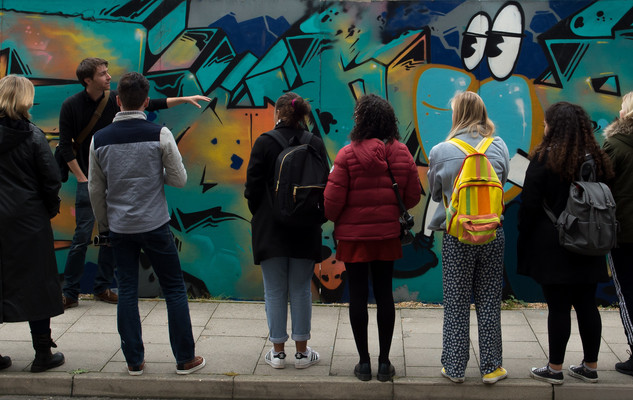What to do with an Art History degree
Explore the careers you might be interested in going into after studying an Art History degree.
What can you do with an undergraduate Art History degree?
Art History students graduate with a wealth of skills, which can be useful in most careers.
If you decide to study at Βι¶ΉΣ³», you’ll explore visual culture from photography to architecture. You may also collaborate with renowned curators and in some cases work with partners within the industry. Find out about our courses and course content.
Already at Βι¶ΉΣ³»? Visit our careers site.
What jobs can you get with an undergraduate Art History degree?
Jobs may include, but are not limited to:
- archivist
- conservationist
- [jobs in] education
- exhibitions officer in a gallery or museum
- gallery curator
- heritage manager
- historic buildings inspector
- journalist
- librarian
- [jobs in] marketing
- museum curator
- publisher
- teacher.
If you haven’t studied a degree yet and you’re considering an Art History course, you may want to browse our:
What do our Art History graduates do?
Recent Art History BA graduates from Βι¶ΉΣ³» have gone into careers including:
- exhibitions and collections assistant, Ditchling Museum of Art and Craft
- media officer, Tru Thoughts
- participation co-ordinator, London Southbank Centre.
(Department of Art History career database)
Skills
You’ll develop analytic and practical skills that may prepare you for a career in the cultural, creative and academic sectors.
You’ll also develop other key skills, which may be useful in your job applications and interviews.
These may include:
- critical thinking
- presentation skills
- research
- communication (written and verbal)
- attention to detail
- ability to work in a team.
At Βι¶ΉΣ³», you can further develop your by signing up for a range of workshops, tutorials and online resources.
Work experience and placements
Getting work experience or doing a placement at a museum or gallery is a great way for you to explore the role, and make you more attractive to a potential employer.
At Βι¶ΉΣ³», during your degree, you can choose to apply for one of the below:
- a professional placement
- an integrated placement if it is a requirement for a course.
This may help you gain skills and work experience before you graduate. Find out more about placements and internships at Βι¶ΉΣ³».
You should also try and gain additional experience by applying for work experience or work shadowing opportunities in your own time. .
You might also want to look for work experience opportunities at organisations such as:
-
-
-
-
-
-
.
What can you do with a Masters in Art History?
You might want to pursue a career in any of the above jobs. Or you could think about continuing your education further. At Βι¶ΉΣ³», we offer an Art History PhD.
You may then be able to go into an academic career, including roles such as:
- researcher
- higher education lecturer
- professor.
For more information about careers after an Art History degree, see the website.
If you’re a current Βι¶ΉΣ³» student, see more advice from our .
